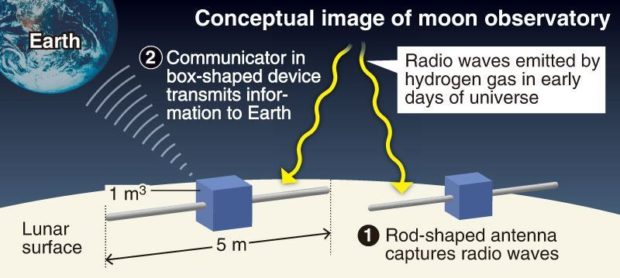Japan’s space exploration agency aims to establish observatory on moon

The Japan News/Asia News Network
TOKYO — The Japan Aerospace Exploration Agency (JAXA) and other organizations are planning to establish an observatory on the moon.
The observatory may be able to gather information about what the universe was like soon after its birth. The first radio telescope for the facility is expected to be launched in fiscal 2028.
The about 100 million year period after the birth of the universe — 13.8 billion years ago — is known as the Dark Ages, when no stars or galaxies were born. Information about the Dark Ages could be obtained by observing special radio waves emitted by the hydrogen gas that filled the universe at that time, but this is impossible from the ground on Earth because of interference from this planet’s atmosphere on the moon.
A team led by JAXA, the National Astronomical Observatory of Japan (NAOJ), Kanagawa University and others has therefore been studying the idea of installing multiple radio telescopes on the moon since the end of last year. A 5-meter-long antenna of the first radio telescope would be mounted on a lunar lander, which would be launched as early as fiscal 2028 on the H3 rocket being developed by JAXA.
The telescope would later be upgraded to a box-shaped device, and the number of telescopes increased to three in the 2030s and about 100 in the 2040s to improve the accuracy of their observations.
Article continues after this advertisement“If the project goes well, it would allow the world’s first observation of the Dark Ages. We are determined to make this a reality,” said radio astronomy professor Satoru Iguchi of NAOJ, who is leading the project.
Article continues after this advertisementRELATED STORIES
Japan counts down to first moon landing
Japan space rocket ordered to self-destruct after failed launch